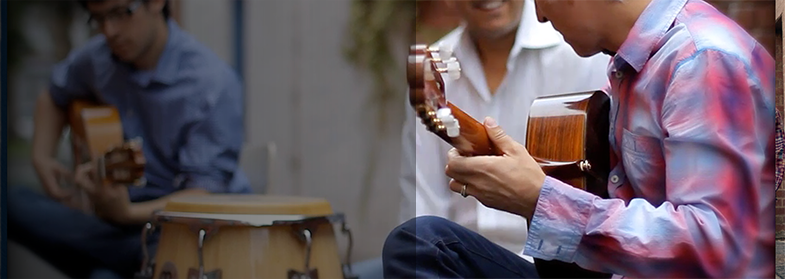Vals by Aguado
 Dionisio Aguado (1774-1849) Born in Madrid, he was a Spanish Classical guitarist and composer. He moved to Paris in the mid-1820s where he became friends with Fernando Sor. It was during this period that he wrote his method book Escuela de Guitarra where he discusses the use of fingernails on the right hand and also a device for holding up the guitar called the
Dionisio Aguado (1774-1849) Born in Madrid, he was a Spanish Classical guitarist and composer. He moved to Paris in the mid-1820s where he became friends with Fernando Sor. It was during this period that he wrote his method book Escuela de Guitarra where he discusses the use of fingernails on the right hand and also a device for holding up the guitar called the
Tripodion which he invented.
The following waltz by Aguado features moving arpeggios and some melody in the bass. The basic right-hand pattern is as follows and should be practised first:

Questions
-
0
It comes more naturally for me to play middle index thumb, but to then do the simultaneous playing of the two notes on the fourth beat with thumb and middle rather than middle and index. No doubt there's a reason for the recommended fingering. Can you explain what that reason is please?
-
0
Yes
Hi Jeff
Yes there is a reason to use i and m rather than p and i.
It’s because the thumb should be used for the bass notes and being a stronger finger should emphasise the first beat. If you then use the thumb for the ‘g’ note as well on beat 3 then you will put too much emphasis on that note and also that beat. It’s not incorrect to play it the way you suggested as long as you can keep that 3rd beat restrained and below the dynamic of the next beat 1. remember it’s a waltz so the beat 1 needs to be stronger than 2 and 3 for it to flow well. Hope that helps! -
0
I meant the third beat. I'm playing the recommended fingering and it's feeling more natural. I'm sure there's a good reason to develop this technique.


